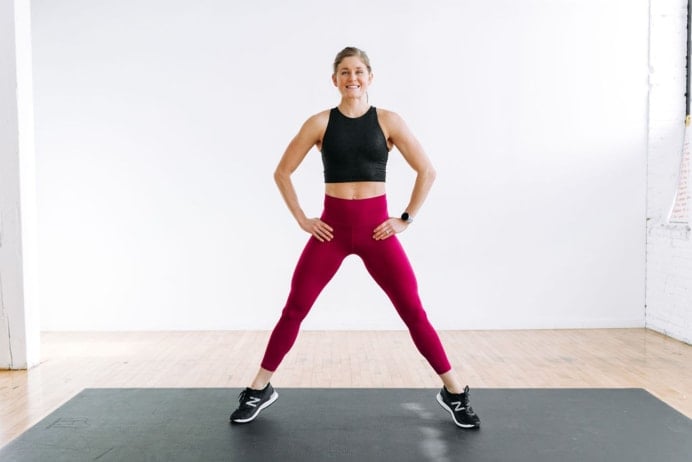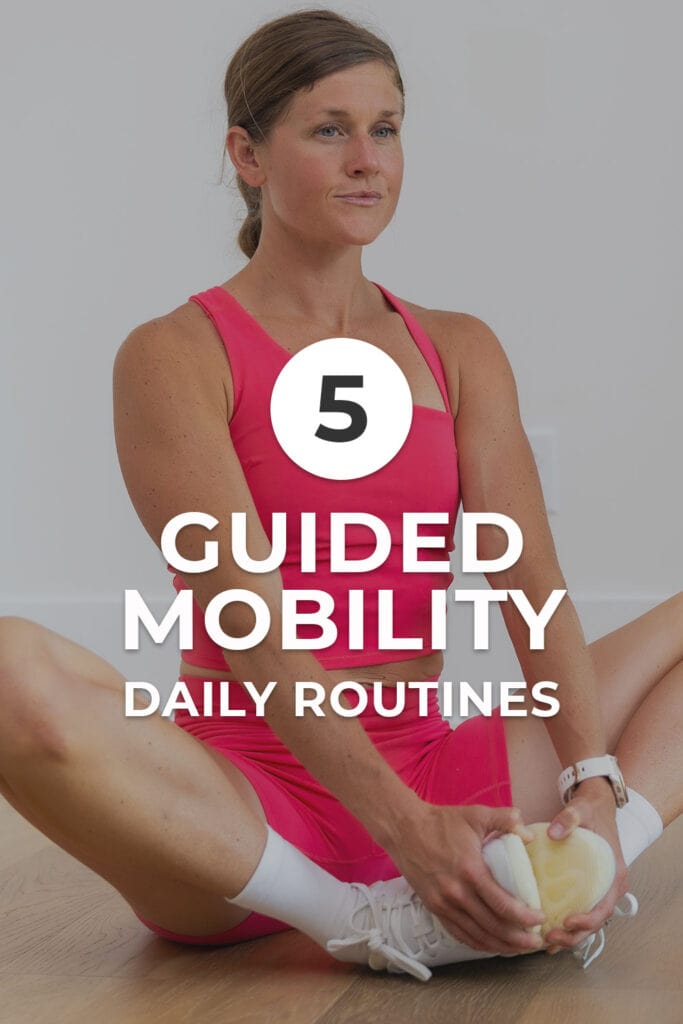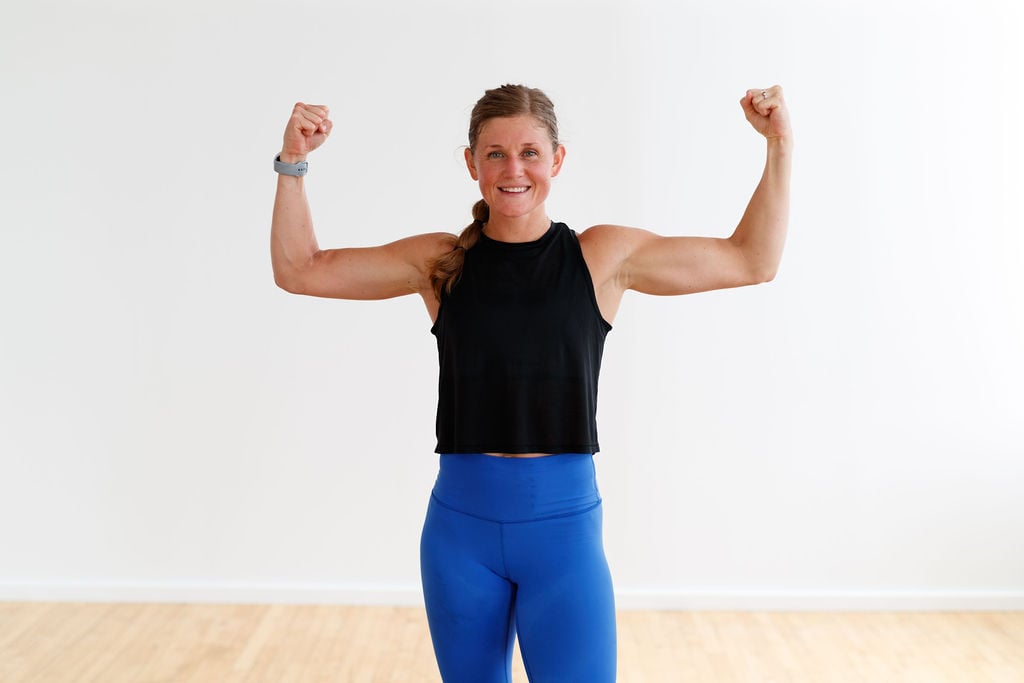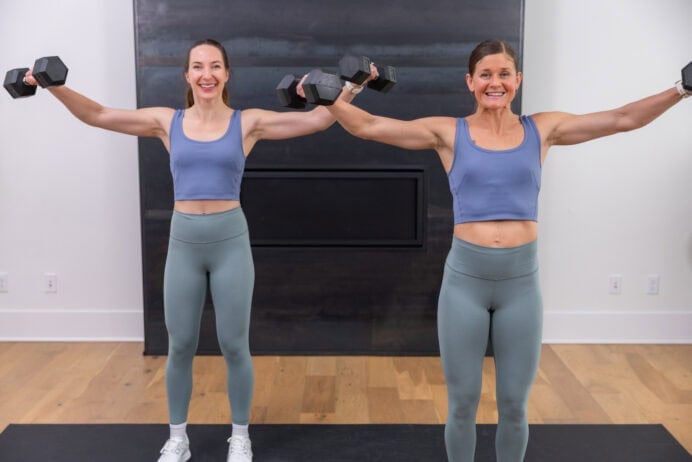
Mobility Training: 5 Mobility Routines for Better Workouts
Improve range of motion with five mobility training routines for better workouts. Mobility training protects your joints, prevents injury, and ultimately improves your workouts. These five mobility routines strengthen the muscles and ligaments in the upper body, lower body and spine.

Mobility training is key to improving athletic performance, preventing injury, and ensuring you can move pain-free.
Mobility exercises take your joints through a full range of motion. This improves your ability to perform everyday movements, such as bending, lifting, reaching or twisting.
Adding mobility exercises to your routine can also improve your athletic performance in strength training and HIIT workouts. For example, better ankle mobility allows you to get deeper into your squats and better shoulder mobility can improve your range of motion on an overhead press.
Add dedicated mobility training to your routine daily to improve mobility in the upper body, lower body and spine.

Below you’ll find the best mobility training workouts to improve your athletic performance.
Under each video, you’ll find details about the format and target area of each mobility workout so you can easily find the routine that best fits your needs.
Mobility Training FAQs
Mobility training includes a variety of exercises that are designed to challenge the entire range of motion of a joint. Consider the dynamic mobility exercises you do in a warm up to prepare for a workout. These exercises can improve your strength, stamina, flexibility, and balance (Harvard Health). Mobility training is a form of progressive overload and can lead to more effective workouts by preventing injury and keeping you moving pain-free.
Yoga and barre/pilates workouts are known for integrating flexibility and mobility work into the workout. These workouts focus on the small, stabilizing muscles surrounding the hip joints, knee joints, ankle joints, shoulder joints, wrist joints, and thoracic spine.
It’s a good idea to work on mobility exercises before your workouts to ensure proper form and reduce your risk of injury. Even if you only work on mobility for a short amount of time, you’ll see the benefits of mobility training. I recommend daily mobility training to improve range of motion in the upper body, lower body and spine.
Stretching primarily targets muscle length and flexibility, while mobility exercises focus on joint health and functional movements. Mobility exercises often involve more dynamic movements that challenge the full range of motion of a joint. For example, you might work on deep squats or full shoulder circles in a mobility routine. Stretching can be more static and focused on a specific muscle or muscle groups.
5 Mobility Training Workouts For Women
1. 15-Minute Mobility Workout
- Equipment: No equipment. Option to add a box or couch for the final few stretches.
- Pregnancy/Postpartum Friendly: Omit the belly down poses.
2. 10-Minute Shoulder Mobility Routine
- Equipment: Optional light dumbbell. You can also add a broom, sweat towel or resistance band.
- Pregnancy/Postpartum Friendly: Follow the modifier if belly-down poses aren’t comfortable for you.
3. 5-Minute Daily Mobility Routine
4. 5 Ankle Mobility Exercises
5. 7 Hip Mobility Exercises
More Workouts
Mobility WorkoutsPin this: Mobility Training At Home





















